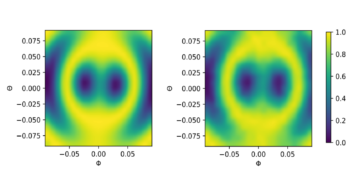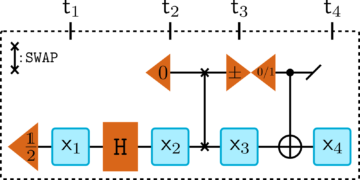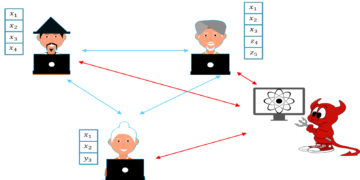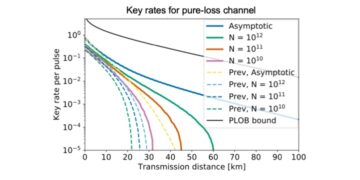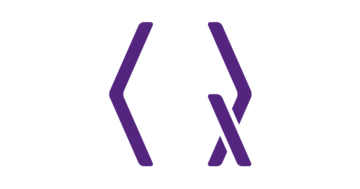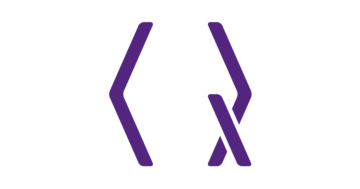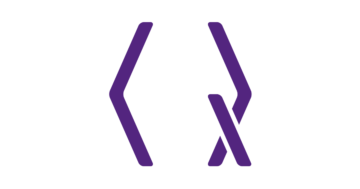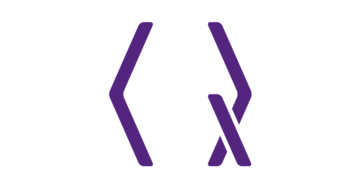1Theoretical Division, Los Alamos National Laboratory, Los Alamos, NM 87545, USA.
2Computer, Computational, and Statistical Sciences Division, Los Alamos National Laboratory, Los Alamos, NM 87545 USA.
Find this paper interesting or want to discuss? Scite or leave a comment on SciRate.
Abstract
We propose a continuous-variable (CV) SWAP test that requires no ancilla register, thereby generalizing the ancilla-free SWAP test for qubits. In this ancilla-free CV SWAP test, the computational basis measurement is replaced by photon number-resolving measurement, and we calculate an upper bound on the error of the overlap estimate obtained from a finite Fock cutoff in the detector. As an example, we show that estimation of the overlap of pure, centered, single-mode Gaussian states of energy $E$ and squeezed in opposite quadratures can be obtained to error $epsilon$ using photon statistics below a Fock basis cutoff $O(Eln epsilon^{-1})$. This cutoff is greatly reduced to $E + O(sqrt{E}ln epsilon^{-1})$ when the states have rapidly decaying Fock tails, such as coherent states. We show how the ancilla-free CV SWAP test can be extended to many modes and applied to quantum algorithms such as variational compiling and entanglement spectroscopy in the CV setting. For the latter we also provide a new algorithm which does not have an analog in qubit systems. The ancilla-free CV SWAP test is implemented on Xanadu’s 8-mode photonic processor in order to estimate the vacuum probability of a two-mode squeezed state.
Featured image: One-layer linear optical circuit for a two-mode ancilla-free continuous variable SWAP test. $U_{text{BS}}({piover 4},0)$ is a 50:50 beamsplitter that maps tensor products of Fock states to eigenvectors of the SWAP gate. Local photon number-resolving measurement outcomes $n$ and $m$ are indicated.
Popular summary
In this paper we propose a continuous-variable (CV) SWAP test that requires no ancilla register, thereby generalizing the ancilla-free SWAP test for qubits. The quantum circuit for the algorithm consists of a single layer of 50-50 beam splitter unitaries followed by photon number detection measurements. The overlap can be estimated by running this quantum circuit repeatedly and processing the measurement outcomes classically. In an ideal setting the estimator is unbiased. We upper-bound the systematic error that results when the photon detectors have a threshold beyond which they saturate in practice. We also upper-bound the number of times the circuit needs to be ran to achieve a desired overall error.
We show how the ancilla-free CV SWAP test can be extended to many modes and applied to quantum algorithms such as variational compiling and entanglement spectroscopy in the CV setting. For the latter we also provide a new algorithm which does not have an analog in qubit systems. We also observe that the ancilla-free CV SWAP test along with the analogous algorithm for qubits can be applied in hybrid quantum systems, such as cavity quantum electrodynamics. Finally, we use the ancilla-free CV SWAP test to calculate the vacuum probability of a two-mode squeezed state on Xanadu’s 8-mode photonic processor.
► BibTeX data
► References
[1] Nicolas C. Menicucci, Peter van Loock, Mile Gu, Christian Weedbrook, Timothy C. Ralph, and Michael A. Nielsen. “Universal quantum computation with continuous-variable cluster states”. Phys. Rev. Lett. 97, 110501 (2006).
https://doi.org/10.1103/PhysRevLett.97.110501
[2] Nicolas C. Menicucci. “Fault-tolerant measurement-based quantum computing with continuous-variable cluster states”. Phys. Rev. Lett. 112, 120504 (2014).
https://doi.org/10.1103/PhysRevLett.112.120504
[3] Kosuke Fukui, Akihisa Tomita, Atsushi Okamoto, and Keisuke Fujii. “High-threshold fault-tolerant quantum computation with analog quantum error correction”. Phys. Rev. X 8, 021054 (2018).
https://doi.org/10.1103/PhysRevX.8.021054
[4] Kyungjoo Noh and Christopher Chamberland. “Fault-tolerant bosonic quantum error correction with the surface–Gottesman-Kitaev-Preskill code”. Phys. Rev. A 101, 012316 (2020).
https://doi.org/10.1103/PhysRevA.101.012316
[5] J. Eli Bourassa, Rafael N. Alexander, Michael Vasmer, Ashlesha Patil, Ilan Tzitrin, Takaya Matsuura, Daiqin Su, Ben Q. Baragiola, Saikat Guha, Guillaume Dauphinais, Krishna K. Sabapathy, Nicolas C. Menicucci, and Ish Dhand. “Blueprint for a Scalable Photonic Fault-Tolerant Quantum Computer”. Quantum 5, 392 (2021).
https://doi.org/10.22331/q-2021-02-04-392
[6] A. K. Pati and S. L. Braunstein. “Deutsch-Jozsa Algorithm for Continuous Variables” (2002). arXiv:quant-ph/0207108.
arXiv:quant-ph/0207108
[7] R. C. Wagner and V. M. Kendon. “The continuous-variable Deutsch–Jozsa algorithm using realistic quantum systems”. J. Phys. A: Math. Theor. 45, 244015 (2012).
https://doi.org/10.1088/1751-8113/45/24/244015
[8] A. K. Pati, S. L. Braunstein, and S. Lloyd. “Quantum searching with continuous variables” (2000). arXiv:quant-ph/0002082.
arXiv:quant-ph/0002082
[9] Harry Buhrman, Richard Cleve, John Watrous, and Ronald de Wolf. “Quantum fingerprinting”. Phys. Rev. Lett. 87, 167902 (2001).
https://doi.org/10.1103/PhysRevLett.87.167902
[10] Juan Carlos Garcia-Escartin and Pedro Chamorro-Posada. “SWAP test and Hong-Ou-Mandel effect are equivalent”. Phys. Rev. A 87, 052330 (2013).
https://doi.org/10.1103/PhysRevA.87.052330
[11] L. Cincio, Y. Subaşı, A. T. Sornborger, and P. J. Coles. “Learning the quantum algorithm for state overlap”. New J. Phys. 20, 113022 (2018).
https://doi.org/10.1088/1367-2630/aae94a
[12] Kok Chuan Tan and Tyler Volkoff. “Variational quantum algorithms to estimate rank, quantum entropies, fidelity, and Fisher information via purity minimization”. Phys. Rev. Research 3, 033251 (2021).
https://doi.org/10.1103/PhysRevResearch.3.033251
[13] Sonika Johri, Damian S. Steiger, and Matthias Troyer. “Entanglement spectroscopy on a quantum computer”. Phys. Rev. B 96, 195136 (2017).
https://doi.org/10.1103/PhysRevB.96.195136
[14] Y. Subaşı, L. Cincio, and P. J. Coles. “Entanglement spectroscopy with a depth-two quantum circuit”. J. Phys. A: Math. Theor. 52, 044001 (2019).
https://doi.org/10.1088/1751-8121/aaf54d
[15] J. Yirka and Y. Subaşı. “Qubit-efficient entanglement spectroscopy using qubit resets”. Quantum 5, 535 (2021).
https://doi.org/10.22331/q-2021-09-02-535
[16] T Brun. “Measuring polynomial functions of states”. Quantum Information Processing 4, 401 (2004).
https://doi.org/10.26421/QIC4.5-6
[17] Jordan Cotler, Soonwon Choi, Alexander Lukin, Hrant Gharibyan, Tarun Grover, M. Eric Tai, Matthew Rispoli, Robert Schittko, Philipp M. Preiss, Adam M. Kaufman, Markus Greiner, Hannes Pichler, and Patrick Hayden. “Quantum virtual cooling”. Phys. Rev. X 9, 031013 (2019).
https://doi.org/10.1103/PhysRevX.9.031013
[18] William J. Huggins, Sam McArdle, Thomas E. O’Brien, Joonho Lee, Nicholas C. Rubin, Sergio Boixo, K. Birgitta Whaley, Ryan Babbush, and Jarrod R. McClean. “Virtual distillation for quantum error mitigation”. Phys. Rev. X 11, 041036 (2021).
https://doi.org/10.1103/PhysRevX.11.041036
[19] Zoë Holmes, Nolan Coble, Andrew T Sornborger, and Yiğit Subaşı. “On nonlinear transformations in quantum computation” (2021). arXiv:2112.12307.
arXiv:2112.12307
[20] O. Bratteli and D. W. Robinson. “Operator algebras and quantum statistical mechanics 2”. Springer, Berlin. (1997).
[21] A. S. Holevo. “Quantum systems, channels, information”. de Gruyter, Berlin/Boston. (2012).
[22] Matthew B. Hastings, Iván González, Ann B. Kallin, and Roger G. Melko. “Measuring Renyi Entanglement Entropy in Quantum Monte Carlo Simulations”. Phys. Rev. Lett. 104, 157201 (2010).
https://doi.org/10.1103/PhysRevLett.104.157201
[23] R. Durrett. “Probability, 4th ed.”. Cambridge University Press. (2010).
[24] J. M. Arrazola, V. Bergholm, K. Bradler, T. R. Bromley, M. J. Collins, I. Dhand, A. Fumagalli, T. Gerrits, A. Goussev, L. G. Helt, J. Hundal, T. Isacsson, R. B. Israel, J. Izaac, S. Jahangiri, R. Janik, N. Killoran, S. P. Kumar, J. Lavoie, A. E. Lita, D. H. Mahler, M. Menotti, B. Morrison, S. W. Nam, L. Neuhaus, H. Y. Qi, N. Quesada, A. Repingon, K. K. Sabapathy, M. Schuld, D. Su, J. Swinarton, A. Szava, K. Tan, P. Tan, V. D. Vaidya, Z. Vernon, Z. Zabaneh, and Y. Zhang. “Quantum circuits with many photons on a programmable nanophotonic chip”. Nature 591, 54 (2021).
https://doi.org/10.1038/s41586-021-03202-1
[25] Yvonne Y. Gao, Brian J. Lester, Kevin S. Chou, Luigi Frunzio, Michel H. Devoret, Liang Jiang, S. M. Girvin, and Robert J. Schoelkopf. “Entanglement of bosonic modes through an engineered exchange interaction”. Nature 566, 509 (2019).
https://doi.org/10.1038/s41586-019-0970-4
[26] I. Pietikainen, O. Cernatik, S. Puri, R. Filip, and S. M. Girvin. “Controlled beam splitter gate transparent to dominant ancilla errors”. Quantum Sci. Technol. 7, 035025 (2022).
https://doi.org/10.1088/2058-9565/ac760a
[27] William R. Clements, Peter C. Humphreys, Benjamin J. Metcalf, W. Steven Kolthammer, and Ian A. Walmsley. “Optimal design for universal multiport interferometers”. Optica 3, 1460–1465 (2016).
https://doi.org/10.1364/OPTICA.3.001460
[28] O. Bratteli and D. W. Robinson. “Operator algebras and quantum statistical mechanics 1”. Springer, Berlin. (1987).
[29] L. Mandel and E. Wolf. “Optical coherence and quantum optics”. Cambridge University Press. (1995).
[30] T. J. Volkoff. “Strategies for variational quantum compiling of a zero-phase beamsplitter on the Xanadu X8 processor” (2022). arXiv:2202.01161.
arXiv:2202.01161
[31] T. J. Volkoff. “Efficient trainability of linear optical modules in quantum optical neural networks”. J. Russ. Laser Res. 42, 250 (2021).
https://doi.org/10.1007/s10946-021-09958-1
[32] Tyler Volkoff, Zoë Holmes, and Andrew Sornborger. “Universal compiling and (no-)free-lunch theorems for continuous-variable quantum learning”. PRX Quantum 2, 040327 (2021).
https://doi.org/10.1103/PRXQuantum.2.040327
[33] Mateus Araújo, Adrien Feix, Fabio Costa, and Časlav Brukner. “Quantum circuits cannot control unknown operations”. New Journal of Physics 16, 093026 (2014).
https://doi.org/10.1088/1367-2630/16/9/093026
[34] Y. Quek, E. Kaur, and M. M. Wilde. “Multivariate trace estimation in constant quantum depth” (2022). arXiv:2206.15405.
arXiv:2206.15405
[35] Ulysse Chabaud, Eleni Diamanti, Damian Markham, Elham Kashefi, and Antoine Joux. “Optimal quantum-programmable projective measurement with linear optics”. Phys. Rev. A 98, 062318 (2018).
https://doi.org/10.1103/PhysRevA.98.062318
[36] C. M. Herdman, P.-N. Roy, R. G. Melko, and A. Del Maestro. “Entanglement area law in superfluid $^{4}$He”. Nat. Phys. 13, 556 (2017).
https://doi.org/10.1038/NPHYS4075
[37] Ashley Montanaro and Ronald de Wolf. “A survey of quantum property testing”. Pages 1–81. Number 7 in Graduate Surveys. Theory of Computing Library. (2016).
https://doi.org/10.4086/toc.gs.2016.007
[38] C.-H. Nguyen, K.-W. Tseng, G. Gleb Maslennikov, H. C. J. Gan, and D. Matsukevich. “Experimental SWAP test of infinite dimensional quantum states” (2021). arXiv:2103.10219.
arXiv:2103.10219
Cited by
[1] Tyler J. Volkoff, “Strategies for Variational Quantum Compiling of a Zero-Phase Beam Splitter on the Xanadu X8 Processor”, Journal of Russian Laser Research (2022).
The above citations are from Crossref’s cited-by service (last updated successfully 2022-09-13 14:39:28). The list may be incomplete as not all publishers provide suitable and complete citation data.
On SAO/NASA ADS no data on citing works was found (last attempt 2022-09-13 14:39:28).
This Paper is published in Quantum under the Creative Commons Attribution 4.0 International (CC BY 4.0) license. Copyright remains with the original copyright holders such as the authors or their institutions.


